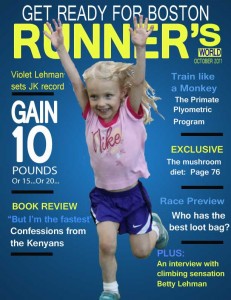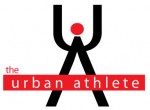 Audience: Runners and therapists
Audience: Runners and therapists
Purpose: A reference to compare running technique
Limitations: Many of us assume that there is one right and better way to run. Deviations from that ideal are assumed to lead to injuries and decreased economy. This is still a debatable concept. Everything I write can be questioned so please do so.
Below is a video of Nicole Stevenson (www.nicolestevenson.com). Nicole is Canada’s former number 1 in the Marathon with a personal best below 2:33. Nicole is also a running coach
I wanted to highlight some probably beneficial components of her running gait. Future posts will look a deviations from this gait and how they might relate to injury.
Key Points on her Form
- cadence changes as speed increases. When running less than a 5 min/km her cadence is less than 180 steps
- foot strike is midfoot with one odd exception. When running at higher speeds she tends to heel strike on the left. Interesting, Nicole has had some achilles problems on the left.
-the knee does not full extend prior to impact, it lands bent and does not fully extend even when the foot comes off the ground to start the swing phase
- there is not a significant increase in hip extension when moving from slow to fast speeds (ripping into the “psoas” with some sort of release technique may be questionable)
- the hips stay relatively level (no dropping) during foot strike and the knees don’t cave in
-the arms do very little in terms of driving forward. We should surely question the role of the arms in producing power. They do not do this. Nor do they tension the thoracodorsal fascia and some how stimulate the opposite Glutes to fire. The glutes fire because we are driving our leg back to the ground. There is no evidence that the arms are required in this. One misquoted and abused paper by Mooney et al (2000) does not support this idea. A future post will look at this.




Can you please provide a citation for Mooney? Thanks.
Nicole has asymmetries as you noted in her landing phase. Not surprisingly she also has asymmetries in her contralateral UE, swinging lower and more forward than the left UE. I’ll be curious to see what the Mooney article has to say, as well as your interpretation.
Furthermore, It’s not easy to tell what her trunk rotation is like but that would be an area to investigate (dynamic and static). Front view of her running would also help. Her lean at the faster pace is not that different from her slower pace which could be an area to eek out more efficiency. Why not maintain a constant cadence throughout? If her slower cadence is 168 and her faster is 180 why not maintain an even mid-170s? Faster cadence isn’t necessary for increased speed if rearward stride is increased, unless you want to overuse hip flexors instead. You address power and push off as components of her faster speed. I personally like to stress more relaxation as the speed changes and de-emphasize power and push off. Use the pelvic rotation and the TL junction as more of the functional origin of the LEs rather than the hips and watch speed and ease evolve.
It’s a good comparison video, at least in showing that even elite athletes have form flaws to improve upon. Interesting stuff.
Hi,
Mooney et al (2001) Orthopedics. 2001 Jan;24(1):29-32.
Exercise treatment for sacroiliac pain
I don’t think any runner keeps a constant cadence. Cadence increases with speed as does stride length.
All the best,
Greg
Cadence CAN increase with increase in speed but is not obligatory. When it does for the majority of normal runners it comes with a decrease in efficiency and economy. It’s only when you get to elite endurance runners that increases in cadence at race pace can occur with less losses in eff +econ. For normal runners to increase speed without increasing cadence they MUST increase stride length. THAT is obligatory. Full disclosure : I am a certified ChiRunning instructor also.
Thanks Bob,
Can you give me a reference specifically addressing that increasing cadence with increasing speed is more metabolically inefficient versus increases speed while maintaining cadence.
It is a very interesting idea. I doubt the research has been done but it would interesting to see.
Greg